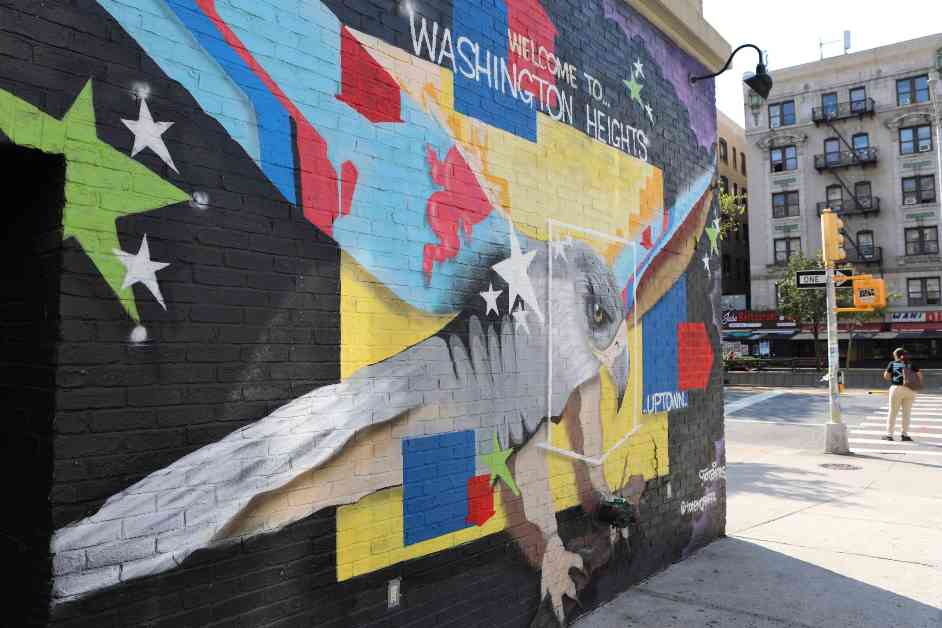Washington Heights Residents Divided Over Dominican Historic District Designation
A controversial vote by the New York State Board for Historic Preservation has left residents of Washington Heights split over the proposed Washington Heights-Dominican Cultural Historic District. The board’s narrow decision to recommend listing the district in the National Register of Historic Places reflects a deep divide within the neighborhood regarding the designation.
The initiative to establish the historic district was spearheaded by the Dominican Studies Institute at the City University of New York after years of extensive research. The proposed district would encompass all of Washington Heights east of Broadway, stretching from West 155th Street up to Dyckman Street. If approved by the National Park Service, the federal listing would formally acknowledge the significant contributions of Dominicans to the cultural and historical fabric of the Manhattan neighborhood.
At the board meeting in Albany, a representative from the CUNY institute read a statement from Ramona Hernandez, the director, emphasizing how the proposal represents the labor and dreams of the Dominican community. The statement highlighted a pivotal period in the late 20th century when Dominican immigrants played a central role in the neighborhood’s transformation amidst challenges such as drug trafficking and disinvestment.
However, the proposal faced strong opposition from local residents who voiced their concerns during the online meeting. Chelsea Towers, survey and national register coordinator for the New York State Historic Preservation Office, revealed that the state had received 27 objections and 37 public comments against the proposal, along with letters of support from approximately 45 individuals.
Tanya Bonner, a social policy consultant and former member of Community Board 12, mobilized community members opposed to the designation, citing concerns about the potential erasure of other cultural groups’ contributions to the neighborhood. Despite Dominicans accounting for about 44% of the population in Washington Heights, the area is also home to African Americans, Puerto Ricans, Mexicans, and Cubans.
Bonner and five other residents spoke out against the proposal, underscoring the value of living in a multicultural community that celebrates diversity without elevating one group above others. Afua Preston, a resident living in the Jumel Historic District, urged for a reconsideration of the proposed district’s boundaries to more accurately reflect the neighborhood’s rich history.
The lack of community input prior to the vote also sparked frustration among residents, with many feeling excluded from the decision-making process. Despite efforts to notify property owners, the majority of Washington Heights residents are renters, limiting their ability to participate in discussions about the historic district designation.
The board’s deliberations culminated in a tied vote, prompting Deputy Commissioner Daniel Mackay to break the deadlock in favor of advancing the nomination to the National Park Service. The decision elicited mixed reactions, with some attendees expressing disappointment and others celebrating the recognition of Dominican heritage in Washington Heights.
Fluid Borders and Cultural Significance
The proposed Washington Heights-Dominican Cultural Historic District aims to highlight the architectural and social significance of the area, showcasing landmarks like the Morris-Jumel Mansion and the Highbridge Water Tower. While Dominicans have resided in Washington Heights since the early 17th century, their social history became particularly significant in the 1960s with a surge of Dominican immigrants.
Historian Robert Snyder contextualizes the neighborhood’s evolution, noting the shifts in demographics from Jewish and Irish families to Latin American immigrants in the mid-20th century. The changing borders of Washington Heights have been influenced by racial dynamics, with attempts to distance the neighborhood from Harlem’s predominantly Black population in the past.
The influx of Dominican immigrants in the 1960s and 70s, many of whom were Afro-Latino, reshaped the cultural landscape of Washington Heights. The proposed historic district aims to commemorate the contributions of this community while acknowledging the neighborhood’s diverse heritage.
Despite the focus on Dominican culture, some residents question the exclusive naming of the district, advocating for a more inclusive approach that recognizes the multicultural tapestry of Washington Heights. The area’s rich history encompasses various ethnic groups, each contributing to the neighborhood’s vibrant identity.
The Road to Recognition
For proponents of the Dominican historic district, the designation represents a crucial step in preserving and honoring the contributions of the Dominican community to Washington Heights. Ramona Hernandez views the National Register listing as a means to ensure that Dominican history and culture are not overlooked, setting a precedent for other marginalized groups to seek recognition for their heritage.
Unlike local landmarks designations, the national recognition would not impose restrictions on property owners but could make them eligible for building preservation tax incentives. Hernandez sees the designation as an opportunity to inscribe Dominican heritage into the broader narrative of American history, highlighting the enduring legacy of immigrant communities in shaping the nation.
The journey towards establishing a Dominican historic district has been met with challenges and controversies, reflecting the complexities of preserving cultural heritage in a diverse urban environment. While the designation may spark debates and disagreements among residents, its ultimate goal is to celebrate the collective contributions of different communities that have shaped Washington Heights into the vibrant neighborhood it is today.
